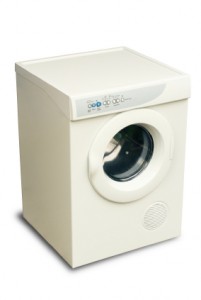 Ensuring good indoor air quality is easy once you have an understanding of the components that effect your homes environment. Using the steps below, perform a quick checklist to improve your indoor quality.
Ensuring good indoor air quality is easy once you have an understanding of the components that effect your homes environment. Using the steps below, perform a quick checklist to improve your indoor quality.
Setting the Standard for Indoor Air Quality
ASHRAE, the American Society of Heating, Refrigeration and Air Conditioning Engineers developed Standard 62.2, Ventilation and Acceptable Indoor Air Quality in Low-Rise Residential Buildings. The standard, which is widely accepted by green builders, state and local around the counties, defines the roles of and minimum requirements for mechanical and natural ventilation systems and the building envelope in order to provide acceptable IAQ in low-rise residential buildings.
10 Steps to Ensure Good Indoor Air Quality
- Vent bathrooms, kitchens, toilets and laundry rooms directly outdoors. Use energy efficient and quiet fans.
- Avoid locating furnaces, air conditioners and ductwork in garages or other spaces where they can inadvertently draw contaminants into the house.
- Properly vent fireplaces, wood stoves, and other hearth products; use tight doors and outdoor air intakes when possible.
- Vent cloths dryers and central vacuum cleaners directly outdoors.
- Store toxic or volatile compounds such as paints, solvents, cleaners, and pesticides out of the occupiable space.
- Minimize or avoid unvented combustion sources such as candles, cigarettes, indoor barbecues, decorative combustion appliances or vent free heaters.
- Provide operable windows to accommodate unusual sources or high-polluting events, such as the use of home cleaning products, hobby activities, etc.
- Use sealed-combustion, power-vented or condensing water heaters and furnaces. When natural-draft applications must be used, they should be tested for proper venting and should be located outside the occupied space when possible.
- Put a good particle filter or air cleaner in your air handling system to keep dirt out of the air and off your ductwork and heating and cooling components.
- Distribute a minimum level of outdoor air throughout the home using whole-house mechanical ventilation.
Source: ASHRAE Standard 62.2 Ventilation and Acceptable Indoor Air Quality on Low-Rise Residential Buildings, and 2001 ASHRAE Handbook, Fundamentals, Chapter 26, Ventilation and Infiltration.


 A clothes dryer works by forcing hot air through a turning drum. Wet clothes placed in the drum are then dried by the moving hot air. It is possible for a full load of wet clothes to contain as much as one and a half gallons of water from a typical load of laundry. Lint is created from the clothes as the water is removed and the clothes dry. Overtime as air passes through this exhaust line the lint collects in the screws, bends and elbows and walls of the air duct.
A clothes dryer works by forcing hot air through a turning drum. Wet clothes placed in the drum are then dried by the moving hot air. It is possible for a full load of wet clothes to contain as much as one and a half gallons of water from a typical load of laundry. Lint is created from the clothes as the water is removed and the clothes dry. Overtime as air passes through this exhaust line the lint collects in the screws, bends and elbows and walls of the air duct.